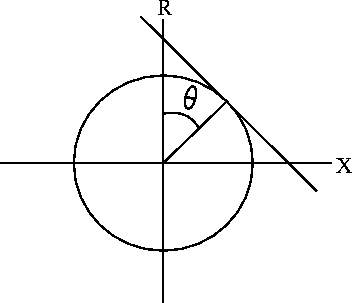![[*]](http://sepwww.stanford.edu/latex2html/cross_ref_motif.gif) .6.
.6.
All the above equations are for
downgoing
waves.
To get equations for
upcoming
waves you need only change the
signs of z and ![]() .Letting D denote a
downgoing
wavefield and U an
upcoming
wavefield, equation (21), for example,
is found in Table
.Letting D denote a
downgoing
wavefield and U an
upcoming
wavefield, equation (21), for example,
is found in Table ![[*]](http://sepwww.stanford.edu/latex2html/cross_ref_motif.gif) .6.
.6.
Using the exploding-reflector concept,
it is the upcoming
wave equation that is found in both migration and diffraction programs.
The downgoing wave equation is useful
for modeling and migration procedures that are more elaborate
than those based on the exploding-reflector concept (chapter ![[*]](http://sepwww.stanford.edu/latex2html/cross_ref_motif.gif) ).
).
|
tanexer
Figure 2 |  |